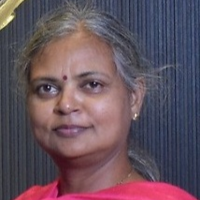Land Allotment In Mahabharata Time
Land Allotment In Mahabharata Time


Land was a scarce resource even at the time of Mahabharata about 3500 years ago. The economy was agrarian, and land ownership was mostly private. The state also owned huge land parcels for infrastructure development and public works. The benevolent Hastinapur government passed a very farmer-friendly legislation, stipulating that commercial entities could acquire land, paying twenty times its economic value. This value was calculated and regularly notified by the Land and Water Resources Ministry (or LWR, as it was popularly known), with Bidur at its helm. The real intention was, of course, to deter crony capitalists from speculating on land and to discourage farmers from selling land, as such transactions, if not restricted, would affect food production, a top priority of the government.
When the pressing need for economic growth required the acquisition of land, the same was allotted from the state pool under the control of the Hastinapur Development Authority (HDA), a wing under LWR. Once every quarter, an empowered royal administration committee with the patriarch Bhisma as the chairman and Kripacharya and Bidur as members scrutinized land allotment applications and made binding recommendations. A few times, aggrieved parties approached the Supreme Court, but the ruling was never in their favor.
This story depicts three interesting land acquisition cases approved by the aforementioned empowered committee.
**Case -1**
Guru Dronyacharya was a distinguished member of the royal cabinet and the national security adviser of the Hastinapur Government. He had a plan to set up an advanced Weaponry and War Science Institute (WWSI) and was successful in roping in investment from the Royal Government of Heaven. The institute required a huge plot of about five hundred acres. The investors demanded freehold land far from the city, where aircraft could land from Heaven away from the prying eyes of ordinary citizens. The institute was of strategic importance as it would impart training to the royal and upper-class youth, preparing them to master war science and enabling them to command the elite divisions of the Hastinapur armed forces. So far, foreign training at the Heavenly facilities abroad was the only option, but the cost was prohibitively high.
HDA neither had such a huge chunk of land in a single location, nor could they allot state-owned land as freehold. They had to look for non-agricultural land in and around the kingdom to match the requirement. A solution was eventually found, and a huge tract of forest land in the southwest direction, far away from the city at the foothills of the Aravalli range, was identified. It was not privately owned, so the state could acquire it free of cost by just a notification in the state gazette. Besides, there existed a small defunct airstrip nearby, which in the past was infrequently used by some Heavenly visitors. A proposal was sent to the empowered committee to acquire this land for WWSI, the dream project of Guru Dronyacharya. Bhisma, the chairman, was not in favor of allotting forest land. He, strongly persuaded by relentless Dronacharya, however, reluctantly agreed to permit two hundred acres only. Dronyacharya was a bit upset but, in view of the hard "take or leave" option from Bhisma, he tried to put pressure through the investors in Heaven. Bhisma was a shrewd man with profound experience in negotiation; he called his mother Ganga, who in turn called her friend Mother Lakshmi, the finance minister of the Royal Government of Heaven. Having failed to convince the investors through her emissaries, the finance minister introduced a new environment protection tax on export-oriented commercial ventures requiring forest land beyond the limiting area of two hundred acres in a single location. Investors fell in line thereafter, as steep taxation significantly enhanced the project cost and dented its profitability.
WWSI was set up in a record two years' time. Admission was allowed through a tough entry test followed by a personal interview with Guru Dronyacharya himself, who never approved any candidate of a lower-class background. The students from Heaven were admitted as part of exchange programs.
The great warrior Arjun was a product of that institute, but the equally competent Ekalabya failed to secure admission.
The institute is located in modern Gurugram, and the office of Guru Dronyacharya is exactly where a metro station in his name stands now. The airstrip is still in use as the modern IGI airport. Some modern historians are of the opinion that Dronacharya conceptualized the “drones” of today, and they believe probably that is why he was named Dronacharya. This, however, remains as a conjecture in the absence of any conclusive evidence.
**Case -2**
Following the passage of the Hastinapur division bill, the Pandavas demanded land to build their new capital. The act mandated the Hastinapur government to transfer land from the state pool and bear the entire expenses from the state exchequer. Duryodhana wanted to impose a new tax to meet this humongous expenditure, but the cabinet recommended that the expenditure would be charged to the consolidated war booty fund of the government so that ordinary people were not unduly burdened. Such a move was not liked by the foreign portfolio investors from Heaven, and the stock market crashed on the date of the announcement.
The empowered committee identified a vast swathe of unused land from the state pool on the west bank of the Yamuna, not very far from Hastinapur. In those days, the west bank was called trans-Yamuna wilderness where no trace of human settlement was ever found. Seeing the location of the land on the map, Bhisma felt it would be very difficult to get acceptance from the Pandavas. He invited ideas from the bureaucrats of the ministry in various meetings. No practical idea emerged. Later, during his address in the annual induction program of the civil service officers, he threw open this question to the bright new entrants. One such officer suggested that a unique catchy name for the new capital might attract the Pandavas. Indrapuri, a dream place of opulence, extravagance, and luxury, was the capital of Heaven and was the envy of everyone. Taking cue from this name, he suggested Indraprastha as the name of the new capital. The rest was done by Kripacharya. He prepared a fabulous presentation and could sell Indraprastha as a dream to be realized to the enterprising Pandavas.
To preserve the uniqueness, Indra himself granted a patent to the Pandavas which proscribed the use of even the extension of the same name for the next three thousand five hundred years.
Three thousand five hundred years later, Indra Prastha Extension, a premier residential colony in the capital of modern India, was born.
Selling a dream through attractive names is still in practice in modern real estate business. You may now find Lotus Pond Apartment in a dilapidated congested lane of an old area of a city. Delhi Development Authority could successfully develop several residential colonies in the city relying on this naming concept. Patparganj, of course, could be renamed as Indra Prastha Extension after the divine patent mentioned above expired.
**Case -3**
An enormous area of plain land was required to fight the war between the teams Kaurava and Pandava. Fighting war near the city area was hazardous to the health of the common citizens, as innumerable soldiers and animals would
be killed, and their corpses would remain piled up for days before cremation could be done. Both parties agreed that the war should not destroy their beloved capital cities. Identifying a big chunk of uninhabited vast open plain land, suitable to host the war between the two major powers with all chariots, horses, elephants, foot soldiers, weapon inventories, hospitals, residential camps, dining halls, and of course, abundant availability of food and water for both humans and animals, was a challenge. Some land was available in the Aravalli range, but hilly terrain posed some logistical difficulties besides none wanted the war zone closer to the nationally important institute WWSI. After a great deal of research, Kurukhestra was found meeting all requirements. It was a plain land far from Hastinapur off Panchanada expressway close to the bank of Saraswati flanked by forests and vast green pastures. Forests had enough deer (to cater to the demand for meat), fruits, honey, and wood, and the pasture land had cattle in abundance to provide milk and milk products. The holy Saraswati river was the source of drinking water as well as fresh fish.
The nearest human settlement was too far away to cause any inconvenience, and noise pollution norms were relaxed so that the war could be fought without any hindrance.
Dhritrarastra, the Kaurava monarch, being blind, was not allowed to travel to the war zone. Heaven’s wireless technology GV (God’s Vision) was not available free. Kauravas paid a hefty price for a single-user license for Sanjay, who through his GV glass could watch the war in real-time and narrate to Dhritrarastra who lost his vision.
A huge cremation facility was created. To mitigate the pains of those who mourned their loved ones, the Government of Heaven conferred the “Holy War” status on Kurukhestra War and allowed departed souls to be temporary residents of Heaven for a brief period before rebirth. Lord Krishna conducted many symposiums explaining that mortal bodies were mere hardware brought to life by the divine operating system software called the soul, which was indestructible and hence mourning over a body without a soul, a piece of hardware, was futile.
Now the river Saraswati cannot be seen, as it ceased to exist in the distant past. Kurukhestra University and NIT Kurukhestra are presently located in the same place where the great war was once fought.
Note: The author lives in Indraprastha Extension, Delhi.



























































